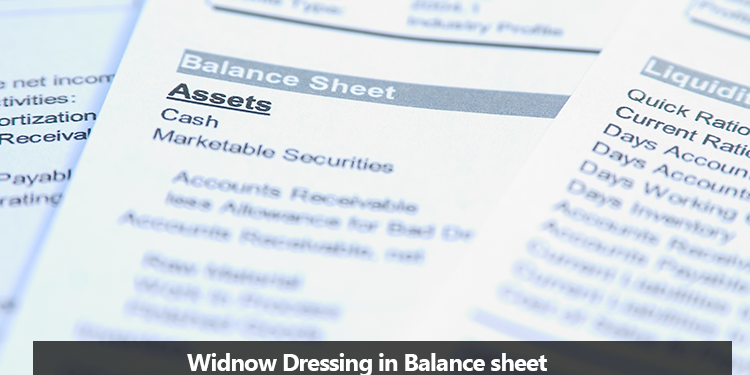Window dressing in accounting is the practice of manipulating financial statements to make a company appear more financially healthy than it actually is. It’s a short-term strategy that companies use to attract investors, consumers, and clients. Let us study here how a balance sheet can be window dressed.
Window dressing in balance-sheet:
- Date of balance sheet coinciding with the end of the season instead of 31st March. (There is no legal binding that the balance sheet should be as of 31st March as per companies Act). However, it is obligatory on the part of all business concerns that they must prepare their financial statements as on 31st March of every year, as per Income Tax Act.
- Preparation of balance sheets on different dates for associates/sister concerns and by effecting sales or transfer of products to a sister/associate company and transferring back after the balance-sheet date is a window dressing. This leads to non-detection of interlocking of funds/stocks.
- Indicating interest on term loan as capital in the balance sheet.
- The temporary reduction in current liabilities by Setting off Current Liabilities against Current Assets. The temporary reduction in current liabilities by issuing cheques in payment of current liabilities and not dispatching the issued cheques to the customers. This would have the effect of improving the current ratio.
- Withdrawal of inter-corporate investments on the balance sheet date.
- Recording bogus sales value in the last few days and showing them as sales returns in the next accounting year.
- Maximizing collection of receivables on the balance sheet date by including cheques yet to be realized.
- Classifying repairs and investments in intangible assets like expenses on research and developments into tangible fixed asset to improve the tangible net worth position
In P&L Account
- Making heavy billing of sales on the date of balance sheet, the actual physical transfer of goods might or might not have taken place. This leads to exhibit the increase in sales, increase in profit, and reduction in closing inventory.
- Changing the method of valuation of stocks in an inflationary situation (*) FIFO to LIFO & LIFO to FIFO leads to profit.
- Changing the method of depreciation particularly with retrospective effect.
- Booking unrealized income like export incentives as revenue.
(*) [The FIFO and LIFO methods are used for accounting inventories like raw materials, work in progress, and finished goods. FIFO refers to ‘first-in, first-out’ which means the oldest inventory items are recorded as sold first. LIFO refers to ‘Last-in, first-out’ which means the most recently produced items recorded as sold first. The companies may change method of valuation of stocks from FIFO to LIFO or vice versa to make changes in profit figures when raw materials are purchased at different prices during the period.]
The window dressed items like showing expenses towards routine repairs or investment in intangible assets as tangible assets and recording bogus sales are misleading the bankers in absolute terms. Therefore it is essential to be very careful in the judgment of qualitative aspects of Balance-Sheet/ Profit and Loss Accounts. From the above cases of window dressing, we may infer that a balance-sheet has its own limitations. However, Auditor’s report, notes, and annexures to the balance sheet help us to detect many latent problems, although Auditor has his/her own limitations.







Your banking school topics are very useful .it covers all the topics.keep it up.